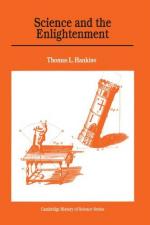
|
| Name: _________________________ | Period: ___________________ |
This quiz consists of 5 multiple choice and 5 short answer questions through Chapter 2, Mathematics and the Exact Sciences.
Multiple Choice Questions
1. According to the narrator in Chapter 2, the only machine employed by rational mechanics was ________.
(a) The mind.
(b) The body.
(c) The soul.
(d) The car.
2. According to Chapter 2, for Newton, ________ consisted in "making experiments and observations and in drawing general Conclusion from them by Induction."
(a) Religion.
(b) Analysis.
(c) Calculus.
(d) Reason.
3. What was the name of the philosopher who could enthusiastically claim that "the works of Nature everywhere sufficiently evidence a Diety"?
(a) D' Alembert.
(b) John Locke.
(c) Aristotle.
(d) Kant.
4. According to the beginning of Chapter 1, in 1759 the French mathematician ________ described a revolution that he saw taking place in natural philosophy.
(a) Euler.
(b) Jean Lerond d'Alembert.
(c) Carnot.
(d) Newton.
5. In Chapter 2, who was the greatest analyst of the Enlightenment and created mathematical theories to predict the buckling of columns and beams?
(a) Leibniz.
(b) Leonhard Euler.
(c) Newton.
(d) Bernoulli.
Short Answer Questions
1. Chapter 1 states that in 1700, ________ first talked about an "almost complete revolution in geometry" that had begun with the analytic geometry of Descartes.
2. In the early years of the Enlightenment, the strongest support on the Continent for Newton's philosophy came from ________.
3. Chapter 2 states that ________ had been created to deal with the problem of motion and that the new mathematical techniques discovered in the eighteenth century were all responses to the challenges of mechanics.
4. The names "biology" and "sociology" were names and fields that were created in what century, according to the narrator in Chapter 1?
5. Madame du Chatelet supported the Leibnizian theory of ________ because it gave a better account of free will.
|
This section contains 261 words (approx. 1 page at 300 words per page) |

|




